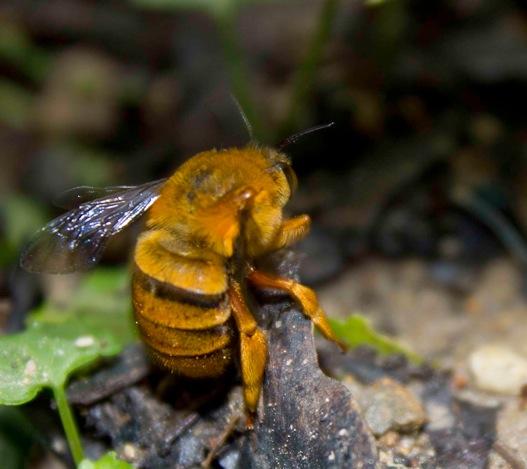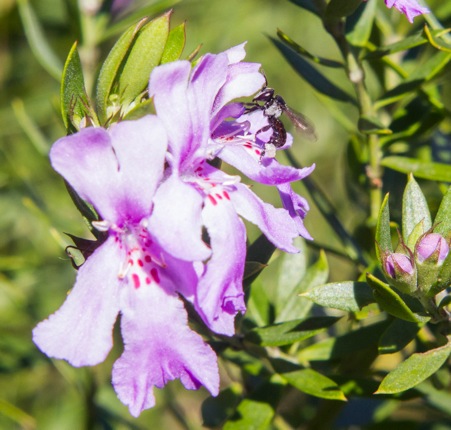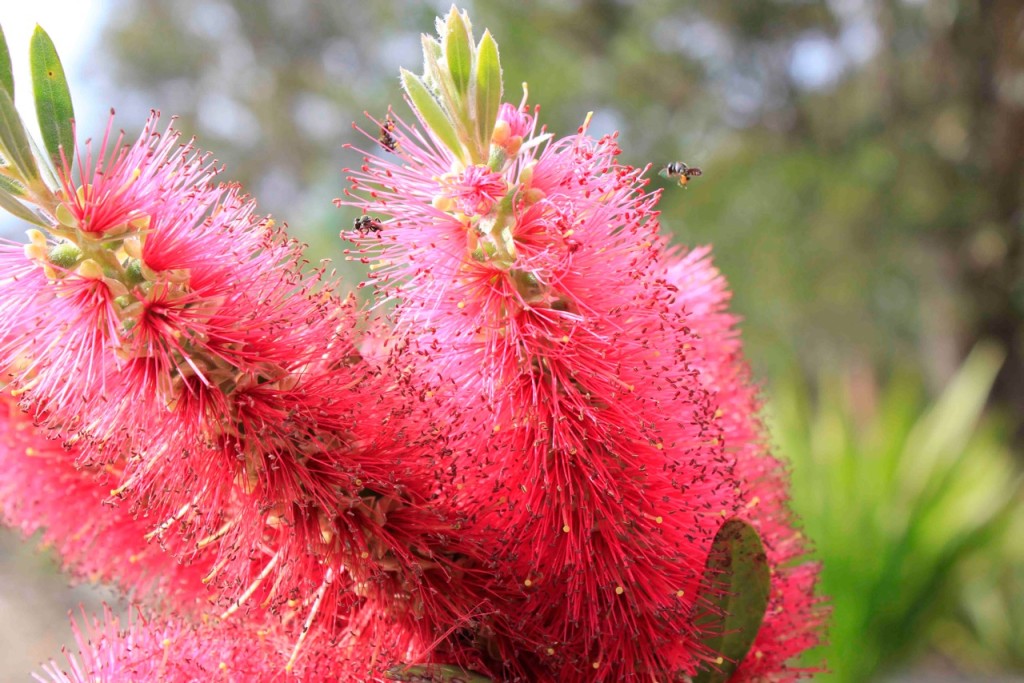Native Bees, Wildlife and Native Plants . . . so what’s in it for me?
Guest Post: Maree Mc Carthy – … supporting earth to sing her songs!
In an island continent such as Australia, with soils and organisms evolved distinctly separate from Europe, its great to watch the local ecosystems and see how we can ‘fit in’ and call this place ‘home’. The wonderful part is that native plants, insects and all the other things that have evolved together over an amazingly long time around here are really quite beautiful and fascinating!
I mean have you ever noticed Christmas Bush when flowering and how the native Hover Flies (short-tongued pollinators) are always attracted to it in clouds, and also to many other native plants. Its handy to know that their larvae love to eat aphids too… handy! – but also be aware that they’re extremely sensitive to Pyrethrum and other chemicals.
Another beautiful thing about having native plants around the place is that they attract the Australian Native Bees.
Australia has over 1,500 species ranging in size from 2mm to 24mm. At present there are about 200 species just in the Sydney region alone. Dollin et al. noted that, “In a park in Concord seven species (of native bees) have been seen in half an hour, and over a two year period a pair of flowering angophoras at Carlingford were visited by at least 35 different species.” (2000:6).
One native bee species (Trigona carbonaria) in the Sydney region are stingless (Dollin et al., 2000:15). They are excellent pollinators of such plants as Macadamia, and Blueberries, and produce extremely valuable honey. Of the rest, none are aggressive, and most are too small to deliver an effective sting.
Unfortunately, urban development has destroyed countless colonies of native bees. However, some have managed to survive in the city – such as the beautiful Blue Banded Bee; the Teddy Bear Bee – often nesting under houses; and the Leaf Cutter Bee which makes the rounded cut from leaves sometimes seen – especially on rose leaves.
As well as a reliable food source, native bees need nesting places, such as:
• natural bushland
• burrows in the ground
• mudbricks,
• holes in dead timber
• dead pithy stems
Many nests are used year after year. Protecting habitat for native bees will help them to survive. Bees visit flowers for both nectar and pollen, and not necessarily at the same time.
Some native plants keep their pollen secure and only allow those who know the trick of ‘Buzz pollination’. Carpenter bees of the Xylocopa genus that bore living and breeding tunnels in trees, and the beautiful Blue-banded Bees of the Amegilla genus are privy to this. These bees light on a flower, hold on with their jaws, then shiver the powerful muscles used in flight. The whole body of the bees vibrates so passionately, it buzzes loudly. Sound waves and shock waves excite the flower. Pores in the top of the anthers then burst open and fine pollen spurts all over the bees.
By Maree
… supporting earth to sing her songs!
REFERENCES AND RESOURCES
Australian Native Bee Research Centre PO Box 74, North Richmond. 2754
Dollin, A., and Batley, M., (2000), Native Bees of the Sydney Region, Australian Native Bee Research
Centre.





